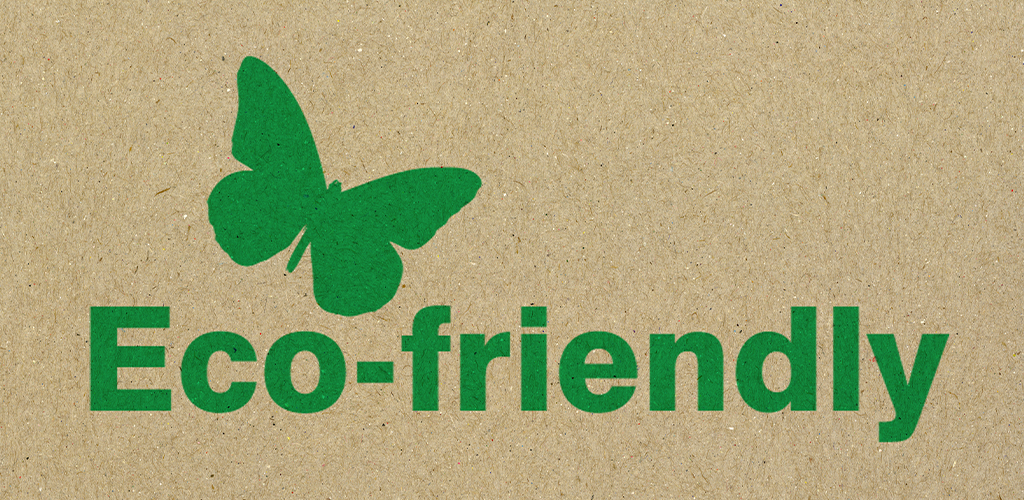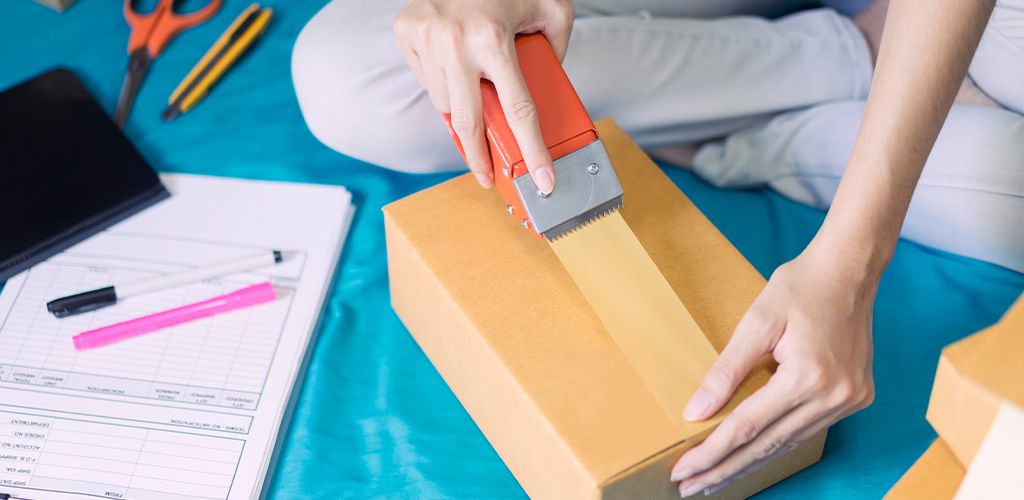How To Go Green With Eco-Friendly Packaging

Every year, UPS and FedEx alone ship more than 11 billion packages worldwide. With the continued growth of ecommerce businesses, that number is only expected to rise. That means online stores everywhere are searching for ways to protect the goods that they’re sending around the world. Popular options include bubble wrap, packing peanuts, and oversized boxes to make room for extra cushioning. Unfortunately, many of those methods aren’t sustainable and end up putting a strain on the environment. In recent years, a push has been made for businesses to switch to more environmentally friendly packing. So, why should you switch to eco-friendly packaging and what options are available to you?
- What is sustainable packaging?
- Why should you switch?
- What are your options?
- Other tips
What is Sustainable Packaging?
Sustainable packing, or “green” packing describes the use of shipping materials that were manufactured with a minimal impact on energy usage and the environment. There are several main goals of sustainable packing materials. Manufacturers of these packing methods aim to reduce the overall amount of packaging, increase the amount of reusable or renewable materials in the packaging, reduce the amount of toxic materials, and ensure packaging is recyclable. They also aim to be cost-friendly, to increase their adoption in businesses.
Why Should You Switch to Eco-Friendly Packaging?
There are several reasons for ecommerce stores to consider switching to green packing methods. The first is that it can often be more cost effective. Many types of sustainable packaging aim to reduce the overall amount of materials needed to ship a product. By reducing package size, the cost of shipping is also reduced. In addition, many new methods are also reusable and ask the customer to return the shipping vessel. By using them multiple times, you eliminate the need to buy packing goods for every order. The next reason to make the switch is a social one. Many consumers are increasingly buying from brands that are actively working on reducing their environmental footprint. By choosing to use eco-friendly packaging, you can increase your market share and your bottom line.
What Are Your Options?

When it comes to sustainable packing, the number of options you have to choose from is rapidly growing. These are just a few:
- Starch-Based Packing Peanuts: Styrofoam packing peanuts, the traditional option, can take up to 500 years to biodegrade. That’s a long time for them to clutter up our landfills. However, starch-based peanuts are made out of agricultural waste instead of petroleum polystyrene. They’re as soft and protective as the styrofoam option, but they dissolve in water within minutes, making them an ideal alternative.
- Natural Fabrics: Not all goods are highly fragile, so not all goods need to be swathed in plastic bubble wrap, massive boxes, or packing peanuts. Instead, you can wrap the items in layers of natural cotton or burlap and put them into a smaller shipping vessel like an envelope or tiny box. They’ll be protected from bumps and scratches and the small box size will also be cheaper. If you purchase in bulk, natural fabrics can also be cheaper than cardboard boxes and other materials.
- Recyclable or Reusable Envelopes: For small items that don’t need a lot of packaging, you can slide it into a paper envelope and send it on its way. This option is often less expensive than shipping with large boxes, and paper can be recycled. If you’re still hoping for something stronger, there is an increasing number of reusable envelopes, such as RePack, that are made from recycled materials. Simply have your customer ship it back (you might need to offer an incentive for them carry out the task), and enjoy not needing to buy packaging supplies for every item you send.
- Biodegradable Plastic: Although technology (and society) isn’t quite there in terms of widespread biodegradable plastic use, there are a few options beginning to hit the market. Instead of staying in the landfills or oceans for centuries, this form of eco-friendly packaging can degrade in the sun and sometimes even be composted. It’s currently a somewhat more expensive option but the return on investment can be high if you can earn more customers searching for green businesses.
- Smaller Boxes: We’ve all received packages where the tiny item we ordered is shrouded in cardboard boxes ten times too big. Yes, cardboard is recyclable but by consistently using too-large boxes, we contribute to deforestation and higher production emissions. Simply switching to packages that match the size of the goods being sent is an easy way to reduce your carbon footprint and save on shipping costs.
- Reusable Packaging: If you can’t use recyclable packaging and you don’t think your customers will send back reusable envelopes, try to send your products in containers that the customers themselves can reuse. Fabric bags can become grocery totes, sealable containers can be used as jars, etc. The more creative you are, the better. You’ll both help to keep your packaging out of landfills, and treat your customer to a small bonus gift that they didn’t expect.
Other Tips
Eco-friendly packaging isn’t the only way you can reduce the carbon footprint your ecommerce business creates from shipping alone. Other options include changing how you manufacture your goods to reduce your emissions, ship in bulk or use wholesalers to reduce shipping distances, and even ship more durable items with no packaging at all.
Many businesses are choosing to proactively switch to eco-friendly packaging materials. It’s easier than ever to join them.
Visit Shopivo and stay tuned for exciting news and updates! Sign up for our emails and stay up-to-date on new developments and features.
